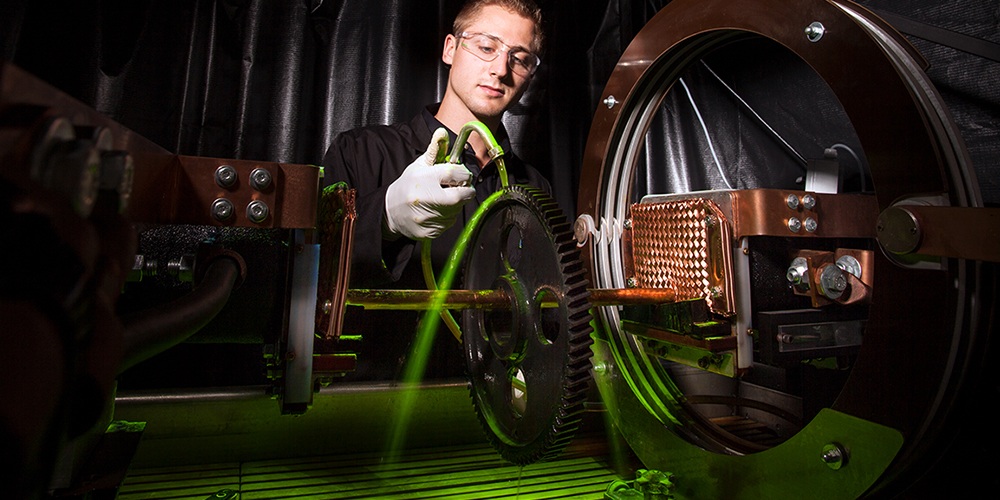August 15, 2017 | by Cheri Stockhausen, Product Applications Manager

Many people, even some NDT experts, do not realize what an important role NDT carrier fluid plays in the performance and dependability of a magnetic particle inspection.
In this article, we explain what an NDT-approved carrier is and what sets it apart from commonly used, non-approved base oils.
An NDT carrier fluid is the fluid in which fluorescent and nonfluorescent magnetic particles are suspended to facilitate their application.
Also known as a petroleum-base suspension vehicle.
An NDT-approved carrier is a light petroleum distillate that imparts magnetic particle suspension stability and mobility.
It is virtually non-fluorescent so it will not interfere with the detectability of fluorescent magnetic particle indications.
NDT-approved carrier oil prevents corrosion of most alloy parts, and prevents corrosion of equipment components in magnetic particle testing machines.
Viscosity promotes good magnetic particle movement. Per ASTM E709 Standard Guide for Magnetic Particle Testing, the viscosity of an NDT-approved carrier vehicle should not be higher than 3.0 cSt at 100°F / 38°C and not more than 5.0 cSt at the lowest temperature the carrier is used at.
A NDT Carrier fluid is:
Very low odor: for operator safety and comfort
Nonfluorescent: so oil does not produce excessive fluorescent background that will interfere with fluorescent indications formed by fluorescent particles
High flash point: for safety
Low viscosity: less than 5 centistokes for proper particle mobility and indication formation
NDT carrier fluid should have a flash point above 200°F / 93.3°C. This high flash point is safe for use in most facilities, while promoting a safe work environment for NDT operators.
A high flash point improves operator and plant safety, and helps prevent fires. OSHA typically requires a flash point at or above 200°F / 93.3°C for fluids that are used in open tanks.
Fire
Damage to the mag particle testing equipment
Injury to operators
Down time
Costly repairs and replacement
Less inspection reliability: Fluorescent carrier oil may interfere with inspection
Poor particle mobility: Viscous (above 3.0 cSt at 100°F / 38°C) carrier oil will impede particle mobility and formation of indications
Clumping of magnetic particles: NDT carrier fluid offers good magnetic particle suspension stability and good particle mobility which enhances indication detection
Corrosion of your magnetic particle unit: Using a NDT carrier fluid will protect equipment components on the mag particle unit from corrosion, leading to less maintenance and repair of the mag particle equipment and lower maintenance and repair costs. MPI units that use NDT carrier fluid look virtually new even after several years of use
Higher background fluorescence: Difficult inspection (fluorescent indications formed by fluorescent magnetic particles will not jump out against strong fluorescent background)
Low flash point: Low flash point oils are unsafe. Fires can happen when using low flash point oils. Low flash point oils are not safe for the NDT operators.
Poor working conditions for operators: Strong odors, flammable oils (fire, safety), difficult inspection due to excessive fluorescent background caused by fluorescent oil
JOIN OUR MAILING LIST TO RECEIVE THE LATEST NDT INSIGHTS AND ARTICLES FROM MAGNAFLUX
JOIN OUR MAILING LIST TO RECEIVE THE LATEST NDT INSIGHTS AND ARTICLES FROM MAGNAFLUX
155 Harlem Avenue
Glenview, IL 60025, USA
Telephone: +1 847-657-5300
Contact Magnaflux Customer Service